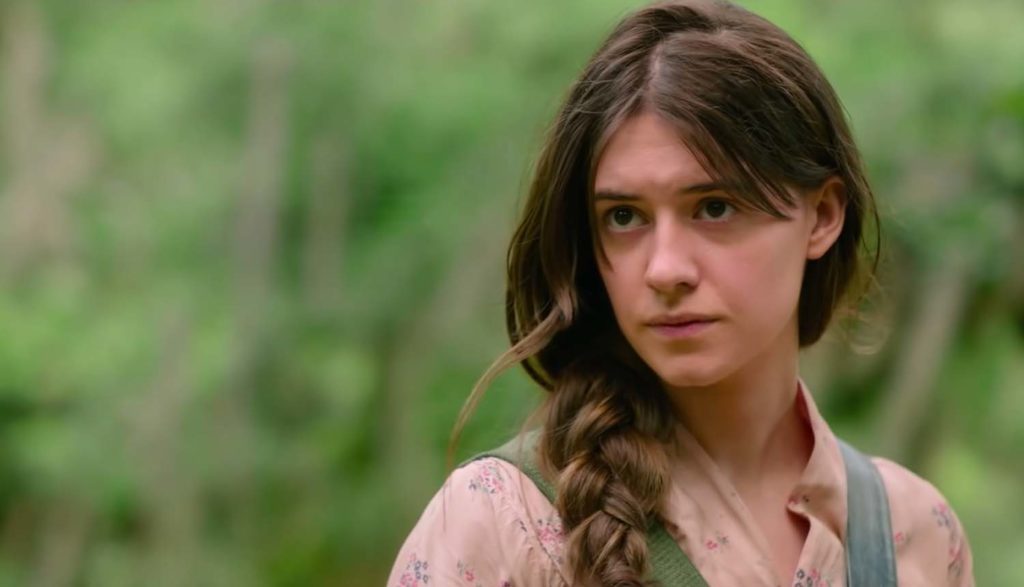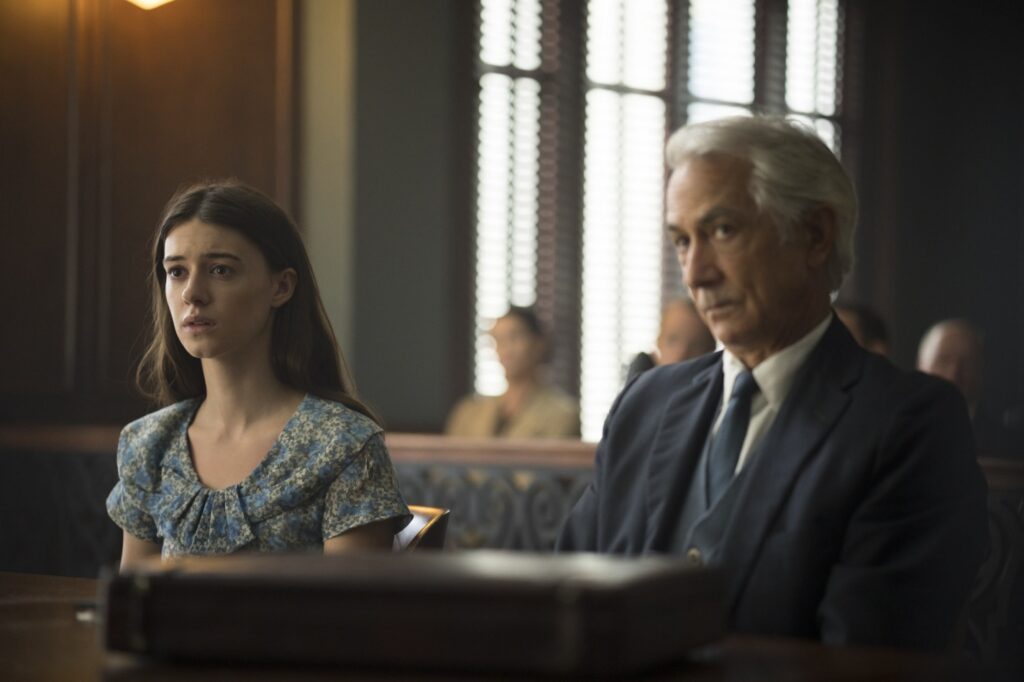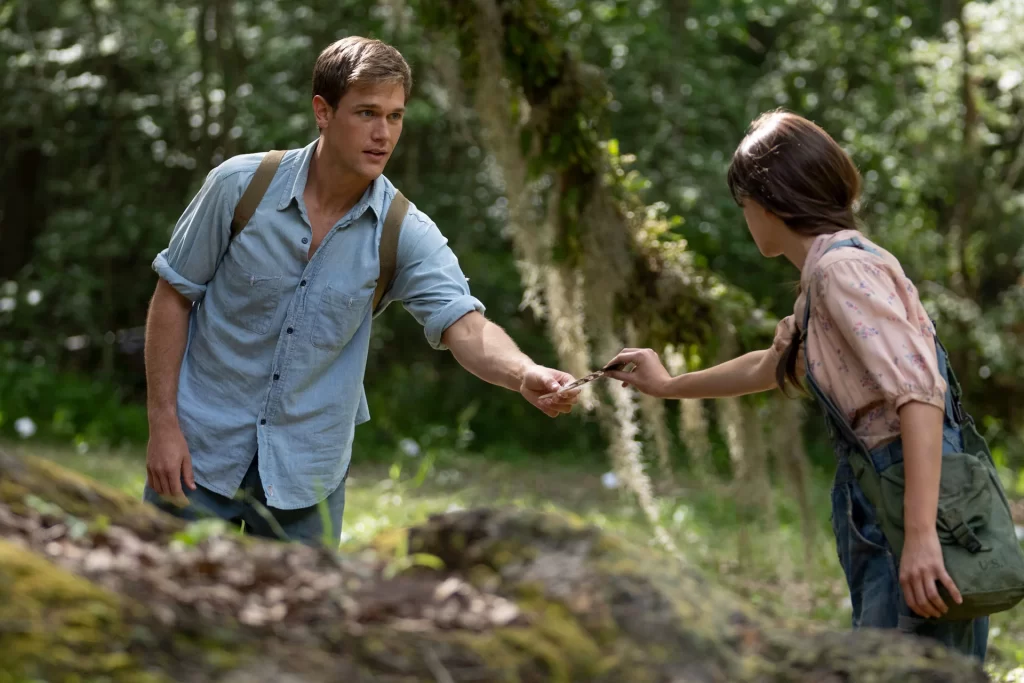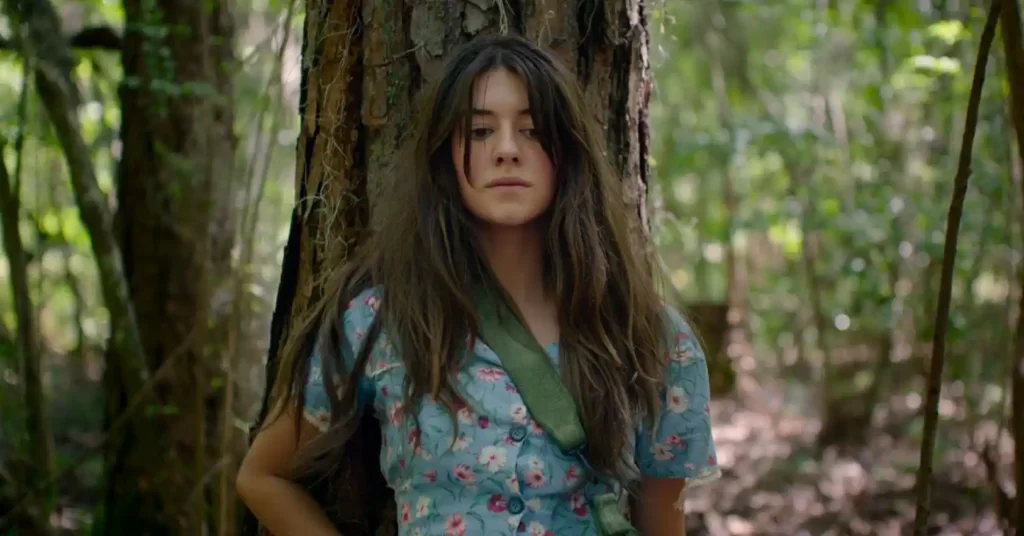
No beating around the bush (or trudging through the marsh): Where, exactly, do the crawdads sing? The answer is both literal and metaphysical, obvious and unknowable. In Olivia Newman’s strained, soulful adaptation of Delia Owens’ best-selling novel, characters speak the title aloud twice: first as a breathless suggestion of childhood sanctuary (it’s a place where kids can hide), second as a lofty notion of spiritual permanence (it’s a realm where essences can linger). Quoting your title in dialogue isn’t a crime, but it can nonetheless signal a certain awkwardness—a fumbling attempt to convey meaning through words rather than images. As a piece of dramatic storytelling, Where the Crawdads Sing is clumsy, sticking moments of raw power into the gummy machinery of the pulp thriller and the courtroom drama. But it is at least sincerely clumsy. What it lacks in clarity and persuasion, it makes up for with earnestness and gumption.
One of the many pure-hearted lessons that the film teaches (or perhaps preaches) is that people often contain more than they appear. The same might be said of movies, though the reverse can also be true; some pictures attempt to distract you with the sheer bustle of stuff—plot twists, hectic action, nonlinear structure—to conceal the fundamental emptiness at their center. Where the Crawdads Sing somehow embodies both sides of this dual principle. Despite cramming itself with incidents and swinging wildly between genres, its story is not especially interesting. Yet its tonal capriciousness—its willingness to shift and swerve while nonetheless rooting itself in its distinct milieu—lends it a certain integrity.

That quality would appear to be in short supply among the citizens of Barkley Cove, the sultry, swampy North Carolina village where the film is set. (Production took place in Louisiana.) Beginning in 1969 before continuously peeling back as though uncovering new layers of a rotted onion, Lucy Alibar’s screenplay opens with the arrest of Kya Clark (the perpetually impressive Daisy Edgar-Jones), a sharp-eyed, soft-spoken pariah whom locals have contemptuously dubbed “The Marsh Girl.” The body of a good ole boy has been discovered in the marsh near her ramshackle home, and the townspeople have swiftly adjudged this innocent-looking lass to be guilty of murder. The lone sympathetic person in Kya’s orbit, at least at first, is her dutiful defense attorney (David Strathairn, ever reliable), a principled protector of due process who takes one glance at the scowling jury and swiftly advises his client to take a plea deal.
Where the Crawdads Sing, then, is a legal procedural. Well, partly. It’s also a murder mystery. And a keening illicit romance. And a backwoods domestic melodrama. And an aspirational tale of artistic genius. You get the idea. There are more species of genre to be found here than the various different-colored birds that Kya ably illustrates in her amateur manuscript, the potential publication of which forms one of the plot’s many tangled threads.

This glut of competing and complementary templates is both appealing and destabilizing. Philosophically speaking, it is heartening to watch a serious, adult-driven movie that attempts to tell a grand, sweeping story—one that’s truly fictional rather than biographical, no less—with a measure of ambition. It is also dangerous because it requires Newman and Alibar to divide their attention among their disparate narrative strands, which they must then unify into a thematically coherent whole. The problem with Where the Crawdads Sing isn’t that it tries to do many things at once. It’s that it struggles to do any of those things well.
The courtroom proceedings, for example, are tedious and musty—the kind where each witness’ testimony is invariably met with a murmur that runs through the spectators, signifying their outrage or shock. The mystery component, in which we ponder who actually killed the victim or whether his death may have been an accident, is similarly dull; each character introduced immediately becomes a suspect, and our requisite speculation about their possible culpability is less engrossing than obnoxious.

Thankfully, Where the Crawdads Sing isn’t really structured as a whodunit. It’s more of a perfumed character study, concentrating on Kya as an alluring but elusive figure, one who simultaneously defies the modern world and aches to assimilate into it. Yet even here, the film veers into Sparksian territory, embroiling Kya within a pair of steamy affairs—one with a nice guy (Taylor John Smith), the other with a bad boy (Harris Dickinson). Both love interests are blandly handsome and thoroughly boring, and while Newman stages some of the youthful lust with sweaty enthusiasm—in lieu of kissing in the rain, a momentous embrace takes place on the water’s edge as birds swirl around in triumph, their flight giving metaphorical lift to the characters’ ecstasy—neither of the relationships achieves the feverish intensity that the script craves.
Yet Kya is more than just an object of male desire. Nor is she a feral beast in need of taming. (I’ve never seen the Jodie Foster vehicle Nell, but based on its agitated description, comparisons would seem misguided.) Instead, she oscillates between alien exoticism and more typical human yearning. Flashbacks to her childhood, where she’s portrayed by Jojo Regina, reveal her as a majestic sufferer—one by one, the older members of her family abandon her—but also a creature of intelligence and resolve. (Speaking of suffering, Garret Dillahunt has the misfortune of playing Kya’s abusive, alcoholic father.) As she ages, surviving thanks to her own industriousness—as well as the quiet decency of a pair of local merchants (Sterling Macer Jr. and Michael Hyatt)—it’s unclear whether she remains in the marsh out of fear of modern civilization, with its behavioral codes and cruel judgments, or because she peacefully accepts a (wild)life of self-sufficiency and solitude. That’s why the subplot involving her painstaking (and perhaps lucrative) illustrations is so intriguing; it offers her an undeniable connection to proper society, one that she finds both frightening and tantalizing.

Are Kya’s combative and combating traits indicative of complexity or inconsistency? On the page, I might choose the later (to be clear, I haven’t read the novel), but that would disserve Edgar-Jones, who delivers a performance of exceptional tension and nuance. The gifted actor’s calling card remains Normal People, where she infused her familiar lovelorn teenager with blazing passion and volcanic heartache. In light of that, you might have expected her to play up Kya’s peculiar qualities, but instead she tamps things down, emphasizing her watchfulness and internalizing her desperation. Newman exploits the film’s humid setting competently, but it is Edgar-Jones’ pressure-cooker portrayal—one that trembles with anguish and longing, always seeming just on the verge of boiling over—that most contributes to its aroma of sticky sweat.
And you might discover that, despite its lumpy inelegance and its messy contradictions, Where the Crawdads Sing has a way of lingering. I am not suggesting that this curious, ungainly movie will haunt your dreams or rattle your conscience. But as an enveloping Taylor Swift ballad unfurls over the closing credits, you may find yourself actively wrestling with what you’ve just seen, attempting to puzzle through its murky unevenness, and pondering whether its flaws—heaving sentimentality, forced grandeur, a reach that far exceeds its grasp—could in fact double as merits. Kya Clark must be smiling. Like its titular location, the very quality of this picture seems to be both a known quantity (not good!) and, the more you search for it, an enigma.
Grade: B-
Jeremy Beck is the editor-in-chief of MovieManifesto. He watches more movies and television than he probably should.
